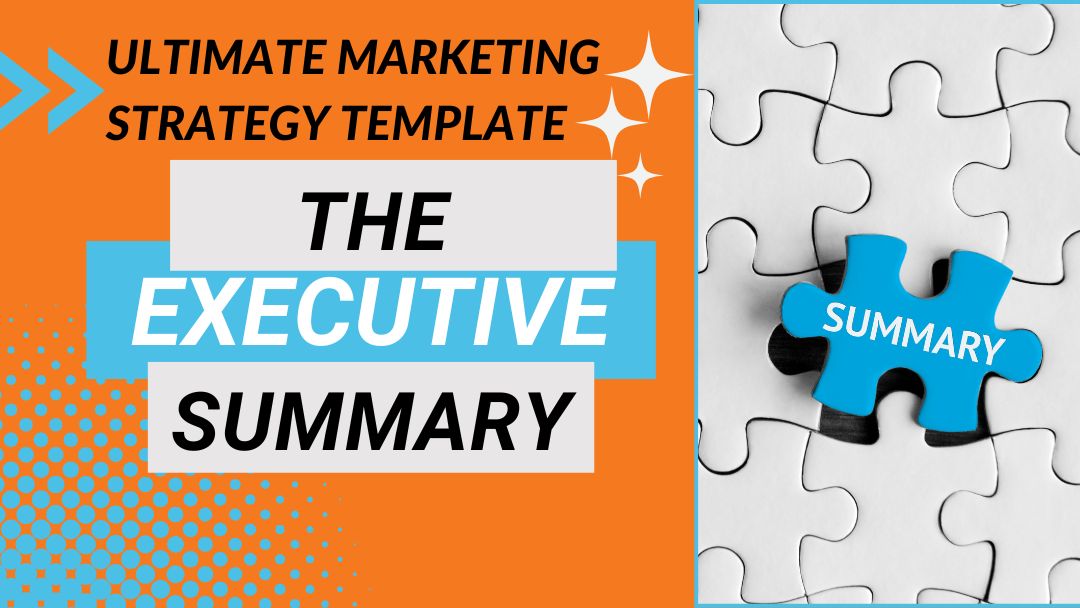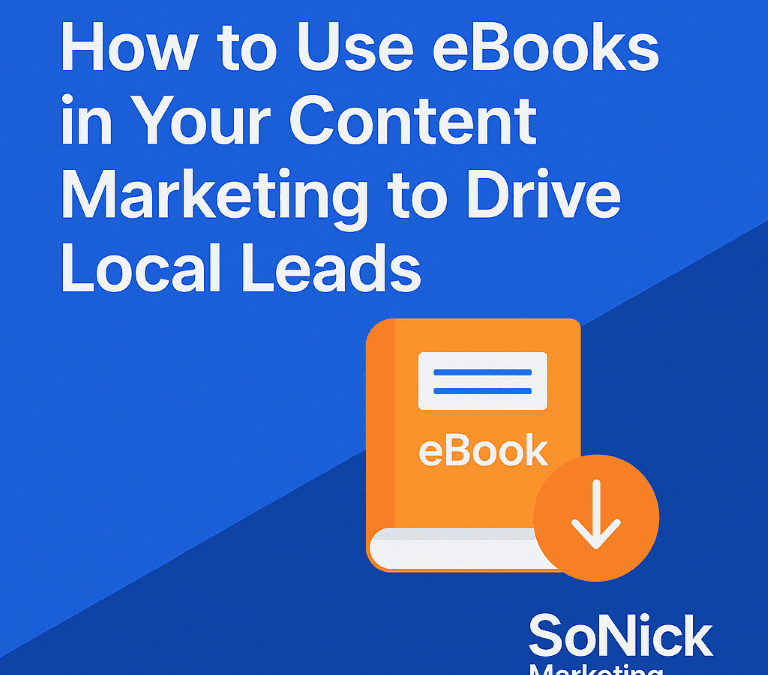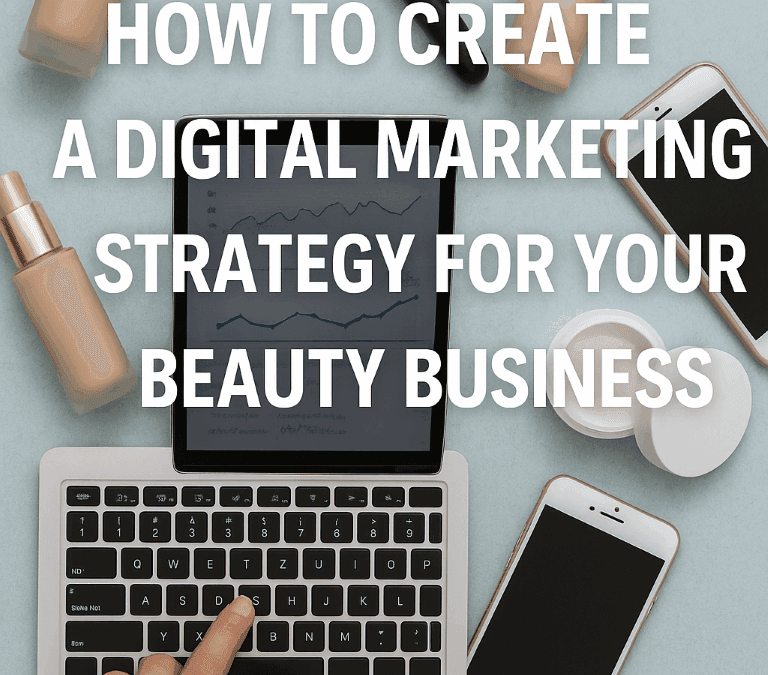You’ve developed an innovative, sought-after and appealing product or service that answers consumer needs and fills a much-needed gap! You’re now at the point where you need a solid marketing strategy, specifying your wider brand goals and objectives, and a comprehensive marketing plan to detail the specific activities you will engage in to get you there.
The Executive Summary
Whenever you start a new business, launch a new product, or seek to increase your customer base — you need a marketing strategy. A handy, all-encompassing document that relays your wider brand aims and goals.
Building brand awareness, attracting leads, diversifying your target customer base and improving your competitive advantage are all examples of core marketing goals.
A marketing strategy acts as a roadmap to guide your marketing efforts. To take your business from idea to reality, grow it to the next level, or develop it for other markets, so you can appeal to a broader range of target consumers.
Your marketing strategy will help you to:
- Understand your customers’ needs
- Tailor your products to address these needs
- Discover the language you need to use to communicate effectively with your customers
- Access your competition, consider your competitive advantage and your unique selling points (USPs)
- Establish which distribution and communication channels will give you the best results
- Produce the right content at the right time to maximise the effectiveness of your marketing efforts
The ultimate aim of a marketing strategy is to finesse your aims and objectives, provide a clear understanding of your brand and its future direction, and share these with your team.
With your marketing strategy in hand, you and your team will have a clear route to market your business effectively. It also adds weight to the viability of your product/service, and you can then use it to approach investors and lenders for funding.
Marketing strategies are complex and multifaceted. In this series of articles, we will explore each facet in-depth. Together, the blogs in this series will guide you through the process of creating a marketing strategy that will take your business to the next level.
In part 1, we start with the executive summary.
What Is The Executive Summary in your marketing plan?

The executive summary is the part of your marketing strategy that outlines the most important findings from your research. It is a summary of the entire marketing strategy. It offers a high-level overview of your overall brand objectives, marketing goals and marketing activities. It’s succinct, yet clear.
Your executive summary is between 1-2 pages long. And you write the executive summary last, after completing all the other sections of your marketing strategy. You may be wondering why we have chosen the executive summary to feature as part 1 of the series; it’s because the executive summary always comes at the beginning of your marketing strategy. It’s designed to stand out, grab the reader’s attention and provide the most vital information on both your short-term and long-term plans.
It outlines your most important goals, actions and research findings conclusions. It allows the reader to understand where your business is heading and how it is going to get there, quickly.
A strong executive summary will:
- Outline your goals
- Reveal the most important findings from each section of your plan and how they relate to achieving your goals
- Use concise language that is easy to follow
- Have a positive and interesting angle
Tips for Writing Your Executive Summary
Tip #1: Start capturing ideas to include in your executive summary from the very beginning of the planning process. As you brainstorm these with your team; get a bolt of inspiration after reading blogs or attending events; or capture an activity, mindset or tool that’s interesting and adopted by a brand you admire — note these down on a blank document.
Anything that relates to your bigger strategy, like key activities, communication channels or ideas to boost promotion, pop under the executive summary heading of the document. These ideas are likely to form the basis of your entire marketing strategy.
Tip #2: A marketing strategy is a dynamic document. Therefore, it changes as your brand, product and/or services, market and competitors change. Your executive summary should reflect this by housing any key updates or revisions to its previous version.
Many brands are going through this process now as they navigate through the changes to their business amid the Covid-19 pandemic. It’s likely that the executive summary and wider marketing strategy will once again need to be modified to navigate through the post-Covid business landscape.
Tip #3: Think of your executive summary as the blurb of a book. Briefly explain high-level critical information in the form of key takeaways for each of the main headings of the marketing strategy. A marketing strategy is often a long, in-depth and multifaceted document. Having a clear and concise summary of these takeaways enables the reader to devour the most important information quickly.
What Should You Include in the Executive Summary?

The executive summary for your marketing strategy must show prospective readers the main points of your brand’s story, marketing strategy, as well as information about the wider marketplace, product and/or services and your business’s direction.
Your executive summary should include the following information:
A description of your business and the people involved in your team
Here, it’s all about telling your story. Provide a short overview of the history of your brand, including the size of its current customer base (if there is one), its structure, sales figures, along with the skillsets/expertise of the people involved and their relevance in helping you achieve your goals.
Include other professionals involved with the operation too, such as your suppliers, accountants and marketing experts.
Example
Our company, XYZ Corporation, was founded in 2005 and has since grown to become a leading provider of software solutions in the technology industry. With a current customer base of over 500 companies, we have established ourselves as a trusted and reliable partner. Our team consists of highly skilled software developers, project managers, and customer support specialists who have extensive experience in the industry. Their expertise and dedication are crucial in helping us achieve our goal of delivering innovative and efficient software solutions to our clients.
A description of the key market trends and the products/services you are marketing
Here, you are delving into your marketplace and specific industry sectors to explore the core trends shaping and impacting them. What factors are influencing their evolution? How are they innovating? Who is listening and engaging?
Describe the product or services clearly and concisely. Outline their unique selling proposition (USPs). These highlight the reason/s people will buy your product or service over your competitors’ offering.
Example
In the rapidly evolving healthcare industry, there are several key market trends that are shaping the landscape. The increasing demand for telehealth services, the adoption of electronic health records, and the focus on personalised medicine are some of the significant trends we have identified. In response to these trends, our company, XYZ Corporation, offers a comprehensive telehealth platform that enables healthcare providers to deliver virtual consultations and remote monitoring services. Our platform incorporates advanced features such as secure video conferencing, data encryption, and integration with electronic health records systems, making it an ideal solution for healthcare organisations looking to embrace telehealth.
A description of your customer base, where you will find them, and how you will target them via specific marketing activities to reach your goals
Describe the characteristics of your target audience(s) and how you identified these.
Explain where you will find them and how you will target them. Note your promotional strategy, i.e. the communication channels and implementation of software or specialists to support your marketing activities and materials, along with the main objectives of these and their associated timelines.
Detail what the core marketing priorities are and specify whether these relate to key business activities, such as the launch of a new product/service or entry into a new marketplace. Outline your distribution strategy, explaining how you will deliver the product or service (e.g., online through downloadable content or conference calls, by post for a physical product or in-person when offering specific types of service).
Example
Our target audience consists of small and medium-sized businesses in the retail industry, specifically those in the fashion and lifestyle sector. Through market research and analysis, we have identified that these businesses are seeking an affordable and user-friendly e-commerce platform to expand their online presence. To reach our target audience, we will utilise digital marketing channels such as social media advertising, search engine optimisation, and content marketing. Additionally, we will partner with industry influencers and attend trade shows and conferences to establish brand awareness and generate leads. Our main objective is to acquire 100 new clients within the first year of launching our marketing campaign.
A summary of the financial planning and projections of the project to manage budgets
Support both short-term and long-term marketing activities with clearly defined financial information. This should outline the associated budget attached to each activity and the metrics used to measure its success.
Example
Our financial planning for the marketing campaign includes a detailed breakdown of the allocated budget for each activity. We have allocated $50,000 for digital advertising, $20,000 for content creation, and $10,000 for attending industry events. These budgets have been carefully calculated based on industry benchmarks and our projected return on investment. To measure the success of our marketing activities, we will track key metrics such as website traffic, conversion rates, and customer acquisition cost. Our financial projections indicate a 20% increase in revenue within the first six months of implementing the marketing campaign.
A summary of the overall objectives of the project and the strategies you will employ to achieve them.
This is effectively an overview of the executive summary. As succinctly as possible, explain your overall objectives and the strategies you will use to achieve these.
Example
Our overall objective for this project is to increase brand awareness and market share in the highly competitive technology industry. To achieve this, we will implement a multi-channel marketing strategy that includes digital advertising, content marketing, and strategic partnerships. Our key strategies include creating engaging and informative content to position ourselves as thought leaders in the industry, leveraging social media platforms to reach a wider audience, and collaborating with complementary businesses to expand our reach. By executing these strategies effectively, we aim to achieve a 15% increase in market share within the next year.
Extra tip: The executive summary should also include any other main takeaways from the subject headings contained within the marketing strategy. For example, if under your SWOT (strengths, weaknesses, opportunities and threats) analysis section, you have recently trained your team on how to use a new piece of technology, this is now a USP that differentiates you from your competitors. House this in the executive summary.
Extra Tips

One important tip when writing an executive summary for a marketing plan is to write it last. This might seem counterintuitive, as the executive summary is typically the first section of a document. However, by writing it last, you ensure that it accurately reflects the content of the entire marketing plan. This approach allows you to summarize the most critical information and key points effectively. Writing the executive summary last also helps you maintain consistency throughout the document. As you go through the process of crafting the marketing plan, you may refine or tweak certain aspects. Writing the executive summary last allows you to include these updates, ensuring that it aligns with the rest of the document.
Another valuable tip is to take notes of the important parts of your marketing plan while working on it. Jotting down key ideas, standout results, or essential strategies will help you when it comes time to write the executive summary. These notes act as a reference point, ensuring that you don’t miss any critical information while summarising the marketing plan. Additionally, taking notes helps you stay organized and focused on the essential aspects of your plan. It can be easy to get lost in the details when creating a marketing plan, but having clear, concise notes will guide you in writing a concise yet comprehensive executive summary.
Conclusion
The executive summary of your marketing strategy provides a concise overview of the entire marketing actions of your brand. It provides you and your team with a roadmap for executing the strategy. It also provides investors with a way to easily evaluate the project and quickly decide if it’s worth their investment.
What’s Next?
Let’s look at your wider marketing strategy. After you’ve started brainstorming your executive summary, we’re going to look at the bigger picture, which includes: your marketplace, your target audiences and buyer personas, your strengths and weaknesses, your competitors, your products and services, and your specific marketing activities.
Downloadable Template
We have created a template for this guide with the tips above included. It can be downloaded here or you can access the google doc version here.
Check out the rest of our Ultimate Marketing strategy series for guidance, insights and tips:
- Part 1: Executive Summary
- Part 2: Market Research
- Part 3: Target Market
- Part 4: Competitor Research
- Part 5: Unique Selling Points (USPs)
- Part 6: Positioning and Pricing
- Part 7: Marketing Promotion and Distribution
- Part 8: Budget: Offers and Giveaways
- Part 9: Marketing Goals and Conversions
- Part 10: Marketing Metrics: Measuring, Modifying and Monitoring





0 Comments